Welcome to AltStrings: the Blog! (to be followed closely by “AltStrings: the T-shirt,” “AltStrings: the Coloring Book” and “AltStrings: the Flamethrower.”)
A constant (though fallible) measure of musicianship used by well-meaning family members around the world is their favorite musician’s ability to “just sit down and read any piece of music!” or “just sit down and play anything they heard on the radio!” Ever self-deprecating musicians describe themselves in these terms too, wishing they had greater skills in one or the other arena.
Cats vs. Dogs? Butter vs. Margarine? (Butter.) In today’s first-ever AltStrings blog post, we will discuss the advantages and disadvantages to reading music vs. learning by ear.
Reading Music
Advantages:
- You can learn a lot of music quickly!
- Lots of people can agree on how the music is “supposed” to go. (This has its own issues in folk traditions, of course, but it can be very helpful in an ensemble setting.)
Disadvantages:
- If you want to play a piece from memory that you’ve learned from the sheet music, you’re going to need to go through a separate memorization process. Otherwise, you’re “tied to the sheet!” (So to speak.) Fortunately, you will get faster at memorization over time (provided you continue to practice doing it over time, of course.)
- Even though we can agree on pitch, rhythm and usually tempo based on sheet music, there’s a LOT that isn’t covered. Exactly how short is that staccato note? Where exactly are those ornaments placed? The point is that music is an aural art form, and written music can never show every inflection and expressive quality your favorite players are producing. Reading and writing music is an inexact science at best.
Learning Music by Ear
Advantages:
- Once you’ve learned some music by ear, you’ve really learned it! No need to memorize it later. Yay!
- As stated earlier – music is an aural art form. Eliminating the written middle man and focusing strictly on how you want it to sound can get you closer to an end product you’re happy with.
Disadvantages:
- It can take a really, REALLY long time, especially if you’re brand-new to learning by ear. Fortunately, just like for memorization, you will get faster at this over time. But even if you are totally fluent in both, learning by ear will never be as fast as reading.
- It can be really difficult to learn, especially without help! You can pick up a book to help you learn to read music, but that won’t work for learning by ear.
Of course, these two seemingly disparate techniques don’t have to exist in a vacuum, totally separate from each other. Most musicians will (or should, at least) use a combination of learning by ear and reading music. For example, if a string quartet member is expected to show up at a first rehearsal of a piece and be able to play it all the way through, they will definitely listen to the piece before rehearsal. They will even follow the score or their part along with the recording, making sure they know what their part is supposed to sound like, and how the parts fit together.
Heck, they might even practice it before they get there! Just kidding, we all know practicing is cheating.
(Just kidding again! Ack! Please don’t take my degree away!)
What do you guys think? Do you prefer to learn music by reading, by listening, or both? Do you wish you could improve your skills in one or the other? What have you tried, and what has or hasn’t worked for you? Leave a comment and let us know!
